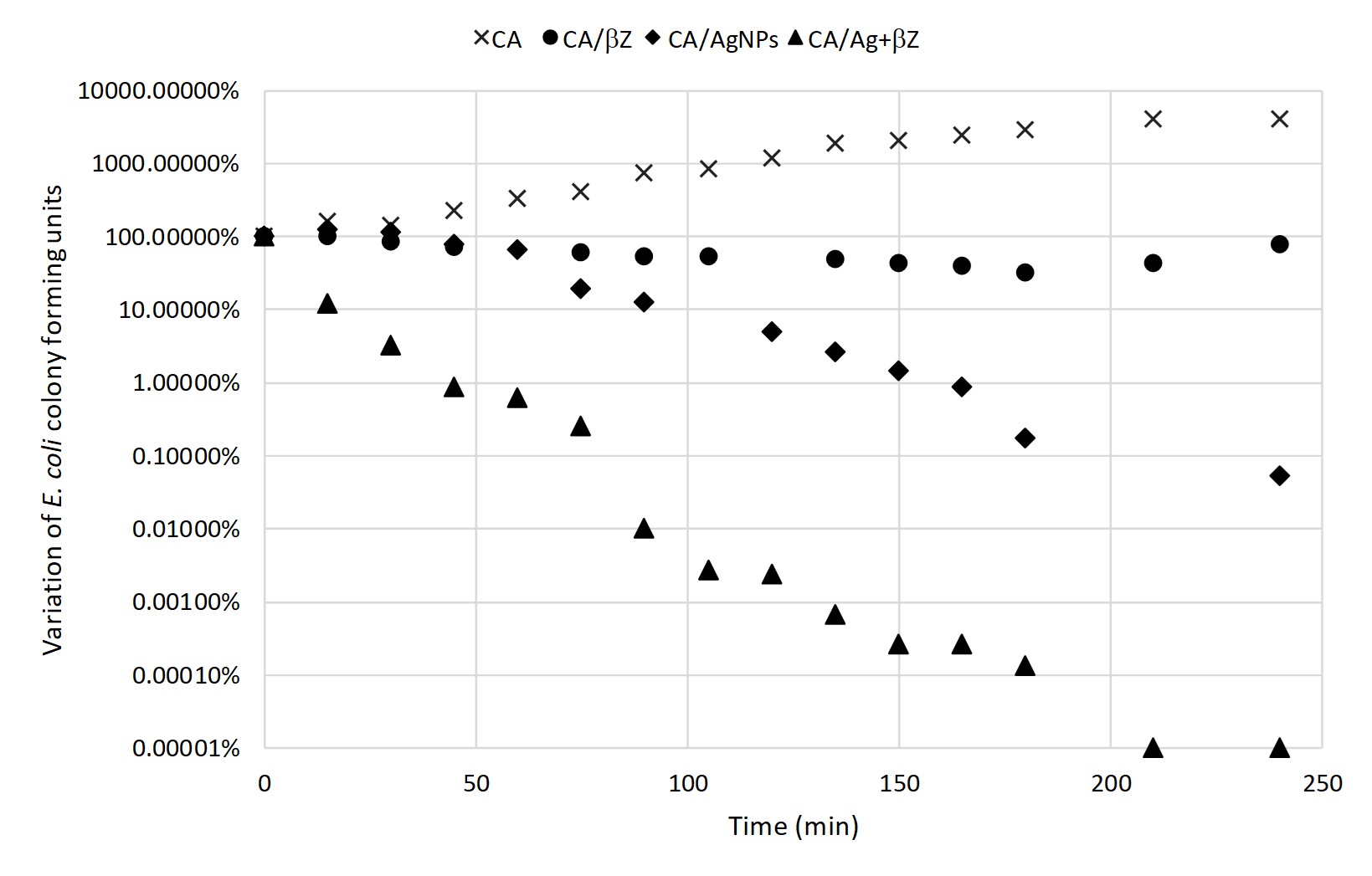(230h) Synthesis and Characterization of Bactericide Activity of Cellulose Acetate Asymmetric NF Composite Membranes with Silver Nanoparticles and Silver Ion Exchanged Zeolite
AIChE Annual Meeting
2020
2020 Virtual AIChE Annual Meeting
Materials Engineering and Sciences Division
Composites for Sustainability
Tuesday, November 17, 2020 - 9:30am to 9:45am
This work envisages the synthesis of composite cellulose acetate (CA) nanofiltration membranes with zeolite and silver nanoparticles in order to attain an increased biofouling control. Three sets of composite CA membranes were prepared containing: i) polyvinylpyrrolidone (PVP) stabilized silver nanoparticles (CA/AgNPs); ii) β-zeolite (CA/βZ) and iii) silver ion-exchanged β-zeolite (CA/Ag+βZ). The membranes were casted using the phase-inversion method with the bactericide agent (silver NPs, zeolite) being added in the casting solutions.
The antibacterial activity of the hybrid membranes was assessed against Escherichia coli.
Fig. 1. Bactericidal effect of the cellulose acetate and cellulose acetate composite membranes, CA, CA/βZ, CA/Ag+βZ, and CA/AgNPs.
The results presented in Fig.1 show that the CA/Ag+βZ membrane was able to inactivate Escherichia coli after just 210 min of contact time. Regarding the CA/AgNPs membrane there was no bacterial activity after 24h of contact time. The results show two different patterns for these membranes. For all membranes it was achieved a reduction of more than 6-log in the number of Escherichia coli.
In conclusion, the results show that the composite CA membranes containing silver ion-exchanged zeolite or silver nanoparticles have the potential to be used in water treatment processes leading to the prevention of biofouling in nanofiltration. 
